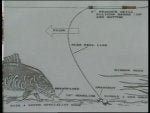Just wondered what size shot you normally use for the lift method. I know you'll all say it depends on the distance you're fishing, wind and how big a float. But all that taken, would 2 swan shot be too much?
I ask as I've just been reading about it again, and that was the writers suggestion. That to me would be more of a bolt rig, but I'm just interested in other views.
In the past I've used just a single swan shot, but its a technique I mostly use close it, rather than at distance.
****y.
I ask as I've just been reading about it again, and that was the writers suggestion. That to me would be more of a bolt rig, but I'm just interested in other views.
In the past I've used just a single swan shot, but its a technique I mostly use close it, rather than at distance.
****y.


